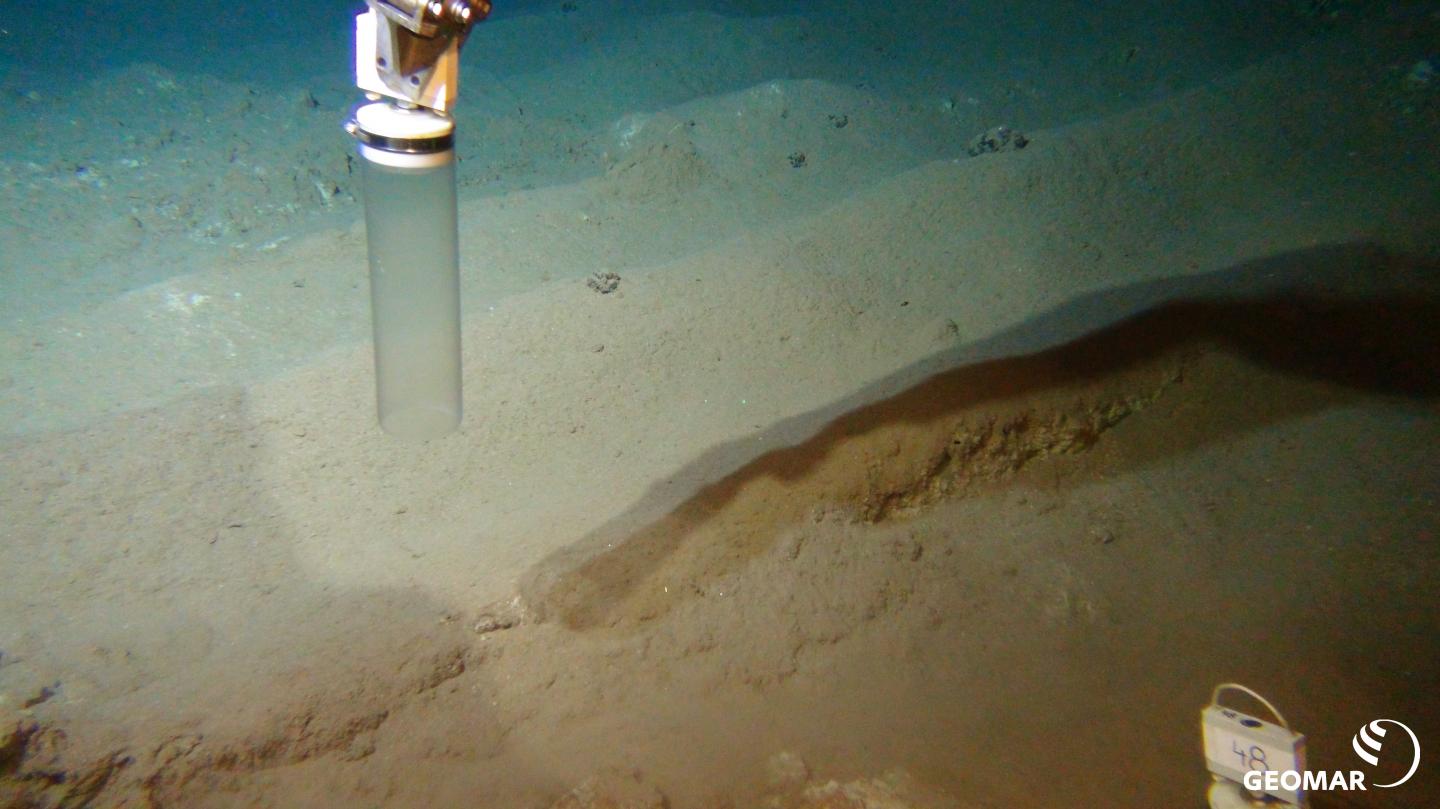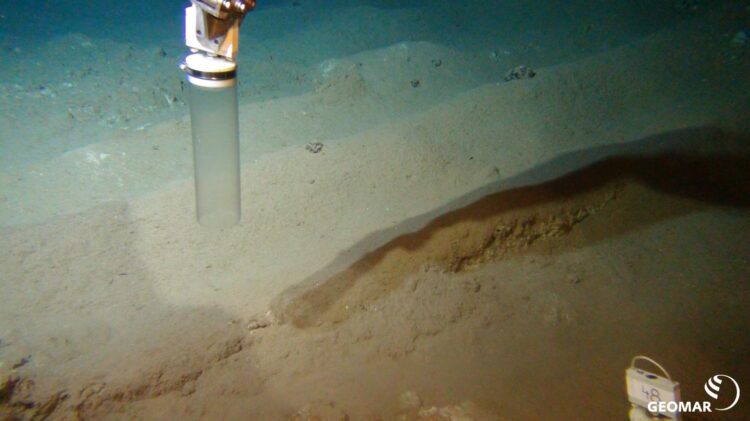Deep-sea mining-related disturbances have a long-term impact on the natural ecosystem functions and microbial communities at the seafloor

Credit: ROV-Team/GEOMAR
Polymetallic nodules and crusts cover many thousands of square kilometres of the world’s deep-sea floor. They contain mainly manganese and iron, but also the valuable metals nickel, cobalt and copper as well as some of the high-tech metals of the rare earths. Since these resources could become scarce on land in the future – for example, due to future needs for batteries, electromobility and digital technologies – marine deposits are economically very interesting. To date, there is no market-ready technology for deep-sea mining. However, it is already clear that interventions in the seabed have a massive and lasting impact on the affected areas. Studies have shown that many sessile inhabitants of the surface of the seafloor depend on the nodules as a substrate, and are still absent decades after a disturbance in the ecosystem. Also, effects on animals living in the seabed have been proven. As part of the BMBF-funded project “MiningImpact”, the Max Planck Institute in Bremen has now taken a closer look at the smallest seabed inhabitants and their performance.
What about the smallest inhabitants of the seafloor?
The present study shows that microorganisms inhabiting the seafloor would also be massively affected by deep-sea mining. The team led by Antje Boetius, group leader at the Max Planck Institute for Marine Microbiology and director at the Alfred Wegener Institute Helmholtz Centre for Polar and Marine Research, travelled to the so-called DISCOL area in the tropical East Pacific, about 3000 kilometres off the coast of Peru, to investigate conditions of the seafloor as well as the activity of its microorganisms. Back in 1989, German researchers had simulated mining-related disturbances at this site by ploughing the seabed in a manganese nodule area of three and a half kilometres in diameter with a plough-harrow, 4000 metres under the surface of the ocean.
“Even 26 years after this disturbance, the plough tracks on the seabed were still clearly visible,” reports first author Tobias Vonnahme, who participated in the study as part of his diploma thesis. “And the bacterial inhabitants were also clearly affected.” Compared to undisturbed regions of the seafloor, only about two thirds of the bacteria lived in the old tracks, and only half of them in fresher plough tracks. The rates of various microbial processes were reduced by three quarters in comparison to undisturbed areas, even after a quarter of a century. “Our calculations have shown that it takes at least 50 years for the microbes to fully resume their normal function,” says Vonnahme.
Dusty and disordered
So deep down and far away from the strong currents on the sea surface, it is not so surprising that even small-scale traces of the DISCOL experiment were still visible. “However, also the biogeochemical conditions had undergone lasting changes,” stresses Antje Boetius. According to the researchers, this is mainly due to the fact that the plough destroys the upper, active sediment layer. It is ploughed under or stirred up and carried away by the currents. In these disturbed areas, the microbial inhabitants can only make limited use of the organic material that sinks to the seafloor from upper water layers. As a result, they lose one of their key functions for the ecosystem. Microbial communities and their functions could thus be suitable as early indicators of damage to deep-sea ecosystems caused by nodule mining – and of the extent of their potential recovery.
Disturbance in another dimension
All mining technologies for manganese nodules currently being developed will lead to a massive disturbance of the seabed down to a depth of at least ten centimetres. This is comparable to the disturbance simulated here, but in completely different dimensions. Commercial deep-sea mining would affect hundreds to thousands of square kilometres of seabed per year, while all plough tracks in the DISCOL combined only covered a few square kilometres. The damage to be expected is correspondingly greater, and it would be correspondingly more difficult for the ecosystem to recover, the researchers stress.
“So far, only few studies have dealt with the disturbance of the biogeochemical function of deep-sea floors caused by mining,” explains Boetius. “With the present study, we are contributing to the development of environmental standards for deep-sea mining and pointing out the limits of seabed recovery. Ecologically sustainable technologies should definitely avoid removing the densely populated and bioactive surface layer of the seabed”.
###
Media Contact
Fanni Aspetsberger
[email protected]
Original Source
https:/
Related Journal Article
http://dx.





